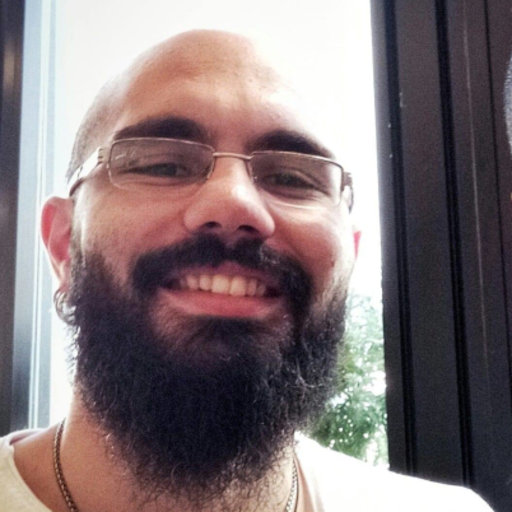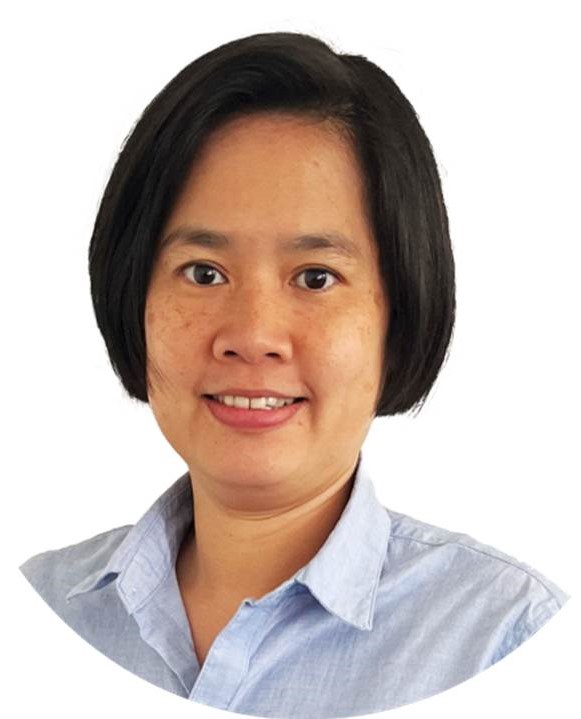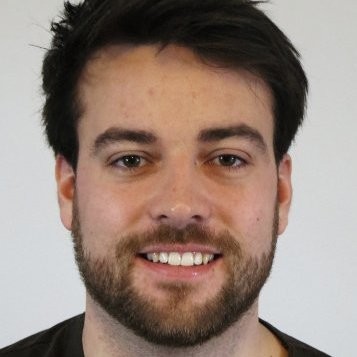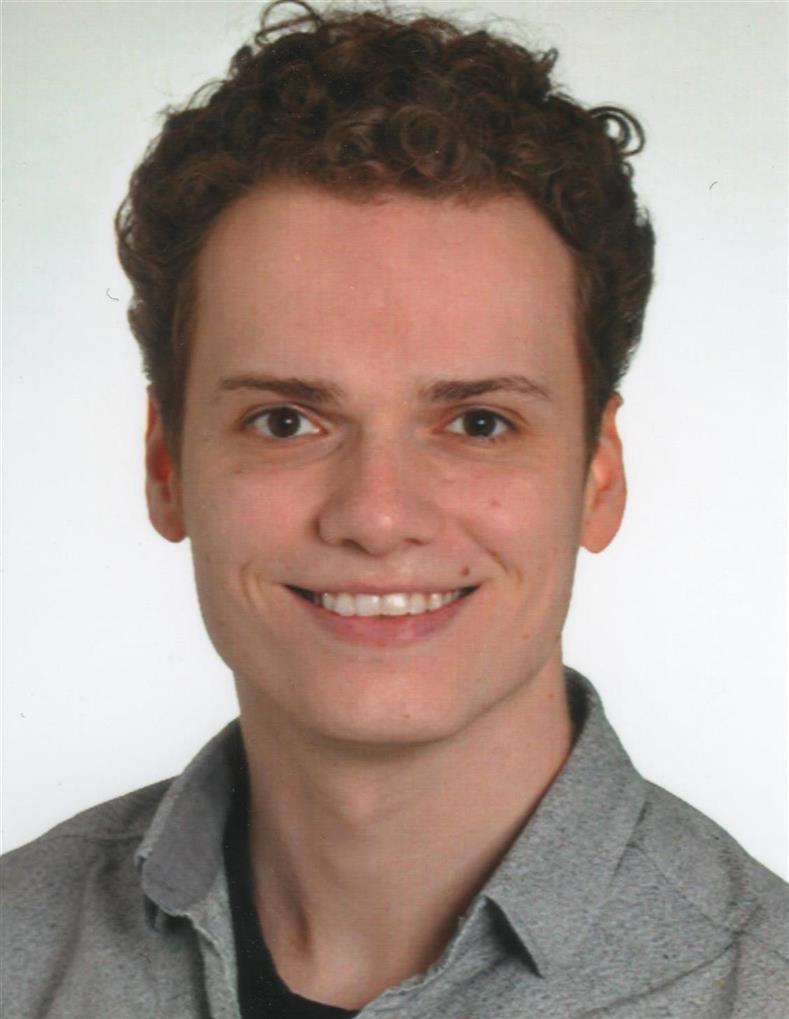
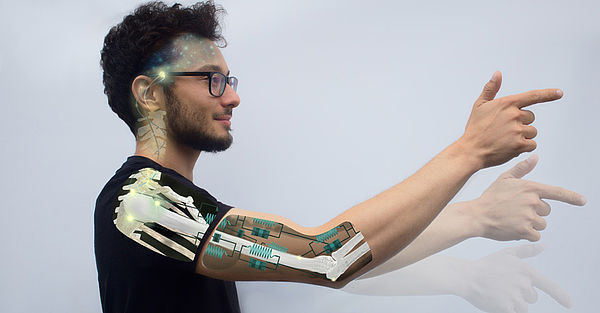
The research group „Multi-Level Modeling in Motor Control and Rehabilitation Robotics“ investigates the generation and control of active biological movements. We develop computer models and simulations of the neuro-musculoskeletal system. In a multi-level approach, we consider the different hierarchical levels contributing to movement generation. This interdisciplinary approach is mainly based on biophysics, biomechanics, and computational motor control.
In this context, we investigate fundamental neuro-mechanical control mechanisms and their dysfunction in neurological disease. A deeper understanding of dynamics, impaired control and interaction will serve as a basis for the development of functional assistive devices.
The group is part of the new regional research alliance „System Human Being“ between the University of Tübingen and the University of Stuttgart. Our goal is to link the neuroscientific expertise in Tübingen with the expertise in system science and computer simulation at the Stuttgart Research Center for Simulation Science (SC SimTech).
Model-based concepts for the control of assistive devices
We develop neuro-musculo-skeletal computer simulations of impaired motor control. These models can be used to estimate desing criteria for assistive devices. Furthermore, such models could be used to evaluate control strategies for assistive devices already in the design phase.
In collaboration with Syn Schmitt at Uni Stuttgart (https://www.imsb.uni-stuttgart.de/research/cbb/) and Christoph Keplinger at MPI-IS (https://rm.is.mpg.de/)
Selected publications: Stollenmaier, K., Rist, I. S., Izzi, F., & Haeufle, D. F. B. (2020). Simulating the response of a neuro-musculoskeletal model to assistive forces: implications for the design of wearables compensating for motor control deficits. *2020 8th IEEE RAS/EMBS International Conference for Biomedical Robotics and Biomechatronics (BioRob)*, 779–784. https://doi.org/10.1109/BioRob49111.2020.9224411
Compensating for expected step-down perturbations: modelling anticipatory control strategies in human walking
In preparation for a step-down, humans change the activation patterns of individual muscles already during the last ground contact before the step-down. By reducing muscle activity in the stance leg, they lower the height of their body's center of mass (Müller et al., 2020). In this project, we further investigate this anticipatory adaptation strategy with the help of a muscle reflex model and perturbation simulations.
Contributors: Lucas Schreff, in collaboration with Roy Müller at Klinikum Bayreuth (<https://www.researchgate.net/lab/GaitLab-Klinikum-Bayreuth-Roy-Mueller>)
Selected publications: Müller, R., Vielemeyer, J. & Häufle, D. F. B. (2020). Negotiating ground level perturbations in walking: Visual perception and expectation of curb height modulate muscle activity. Journal of Biomechanics, 113, 110121. doi.org/10.1016/j.jbiomech.2020.110121
Modelling motor control in rare neurodegenerative diseases
Motor control abnormalities are key symptoms in several rare neurodegenerative diseases. We contribute to a project in which our colleagues study the development and progression of movement dysfunctions by assessing kinematics of premanifest and manifest patients. Our role in this project is to develop neuro-mechanical models with the aim to develop a more detailed understanding of the progressive character of motor control dysfunction. Especially, we are interested in the relationship between altered neuromuscular reflexes and kinematics.
Contributors: Christian Laßmann, in Collaboration with Winfried Ilg and Ludger Schoels, HIH Tübingen
The contribution of muscles to the control of movement: quantifying morphological computation
Muscle fibres possess complex, nonlinear viscous properties, which allow to counter unexpected perturbations with zero time delay. This feature is critical during agile, legged locomotion, e.g., hopping and running, where sensory blindness due to neurotransmission delays can result in dangerous falls. By expanding the current understanding of the stabilising capacity of fibre viscosity, we aim to unveil new design principles for technical solutions in the field of legged robotics and medical rehabilitation/assistance.
Contributors: Fabio Izzi and Matthew Araz, In collaboration with MPI-IS (Link: dlg.is.mpg.de) and Uni Stuttgart (Link: www.inspo.uni-stuttgart.de/institut/av/)
Mo, A., Izzi, F., Haeufle, D. F. B., & Badri-Spröwitz, A. (2020). Effective Viscous Damping Enables Morphological Computation in Legged Locomotion. *Frontiers in Robotics and AI - Soft Robotics*, *7*(August), 1–15. doi.org/10.3389/frobt.2020.00110
Leveraging morphological computation in autonomous control
Muscle-driven biological systems effortlessly outperform even the most sophisticated robots in terms of adaptivity, longevity and complexity of behaviour. However, widespread adoption of biomimetic devices is partially hindered by the difficulty of precisely controlling muscular morphologies, for which classical control approaches tend to fail. We therefore aim to control these systems with novel reinforcement learning techniques, leveraging their ability to deal with complex nonlinear actuators. The combination of autonomously learning agents with biomechanically inspired morphologies may unlock some of the secrets encoded by millions of years of evolution, while dealing with the unique control difficulties that these morphologies exhibit.
Contributors: Pierre Schumacher, in Collaboration with Georg Martius at MPI-IS (<https://al.is.mpg.de/>) and Dieter Büchler at MPI-IS (https://www.is.mpg.de/person/dbuechler) and Syn Schmitt at Uni Stuttgart (Link: www.imsb.uni-stuttgart.de/research/cbb/).
Selected publications: Haeufle, D. F. B., Wochner, I., Holzmüller, D., Driess, D., Günther, M., & Schmitt, S. (2020). Muscles Reduce Neuronal Information Load: Quantification of Control Effort in Biological vs. Robotic Pointing and Walking. *Frontiers in Robotics and AI*, *7*, Research topic: Recent Trends in Morphological Com. doi.org/10.3389/frobt.2020.00077
1. Günther, M., Rockenfeller, R., Weihmann, T., Haeufle, D. F. B., Götz, T., & Schmitt, S. (2021). Rules of nature’s Formula Run: Muscle mechanics during late stance is the key to explaining maximum running speed. Journal of Theoretical Biology, 523, 110714. doi.org/10.1016/j.jtbi.2021.110714
2. Karakostis, F. A., Haeufle, D., Anastopoulou, I., Moraitis, K., Hotz, G., Tourloukis, V., & Harvati, K. (2021). Biomechanics of the human thumb and the evolution of dexterity. Current Biology, 31(6), 1317-1325.e8. doi.org/10.1016/j.cub.2020.12.041
3. Walter, J. R., Günther, M., Haeufle, D. F. B., & Schmitt, S. (2021). A geometry- and muscle-based control architecture for synthesising biological movement. Biological Cybernetics, 115(1), 7–37. doi.org/10.1007/s00422-020-00856-4
4. Haeufle, D., Stollenmaier, K., Heinrich, I., Schmitt, S., Ghazi-Zahedi, K. (2020). Morphological computation increases from lower- to higher-level of biological motor control hierarchy, Frontiers in Robotics and AI. doi.org/10.3389/frobt.2020.511265.
5. Haeufle, D. F. B., Wochner, I., Holzmüller, D., Driess, D., Günther, M., & Schmitt, S. (2020). Muscles Reduce Neuronal Information Load: Quantification of Control Effort in Biological vs. Robotic Pointing and Walking. Frontiers in Robotics and AI, 7, Research topic: Recent Trends in Morphological Com. doi.org/10.3389/frobt.2020.00077
6. Haeufle, D. F. B., Siegel, J., Hochstein, S., Schmitt, S., Siebert, T., Gusew, A., … Stutzig, N. (2020). Energy Expenditure of Dynamic Submaximal Human Plantarflexion Movements: Model Prediction and Validation by in-vivo Magnetic Resonance Spectroscopy. Frontiers in Bioengineering and Biotechnology, 8(June), 1–18. doi.org/10.3389/fbioe.2020.00622
7. Stollenmaier, K., Ilg, W., & Haeufle, D. F. B. (2020). Predicting Perturbed Human Arm Movements in a Neuro-Musculoskeletal Model to Investigate the Muscular Force Response. Frontiers in Bioengineering and Biotechnology, 8(308). doi.org/10.3389/fbioe.2020.00308
8. Glenday, J. D., Steinhilber, B., Jung, F., & Haeufle, D. F. B. (2020). Development of a subject-specific musculoskeletal model of the wrist to predict frictional work dissipated due to tendon gliding resistance in the carpal tunnel. Computer Methods in Biomechanics and Biomedical Engineering, 0(0), 1–14. doi.org/10.1080/10255842.2020.1862094
9. Müller, R., Vielemeyer, J., & Haeufle, D. F. B. (2020). Negotiating ground level perturbations in walking: anticipatory and predictive control strategies modulate muscle activity based on visual perception and expectation of curb height. Journal of Biomechanics. accepted on October 22nd, 2020.
10. Wochner, I., Driess, D., Zimmermann, H., Haeufle, D. F. B., Toussaint, M., & Schmitt, S. (2020). Optimality Principles in Human Point-to-Manifold Reaching Accounting for Muscle Dynamics. Frontiers in Computational Neuroscience, 14. doi.org/10.3389/fncom.2020.00038
11. Rockenfeller, R., Günther, M., Stutzig, N., Haeufle, D. F. B., Siebert, T., Schmitt, S., … Götz, T. (2020). Exhaustion of Skeletal Muscle Fibers Within Seconds: Incorporating Phosphate Kinetics Into a Hill-Type Model. Frontiers in Physiology, 11. doi.org/10.3389/fphys.2020.00306
12. Mo, A., Izzi, F., Haeufle, D. F. B., & Badri-Spröwitz, A. (2020). Effective Viscous Damping Enables Morphological Computation in Legged Locomotion. Frontiers in Robotics and AI, Soft Robotics. doi.org/10.3389/frobt.2020.00110
13. Schmitt, S., Günther, M., & Häufle, D. F. B. (2019). The dynamics of the skeletal muscle: A systems biophysics perspective on muscle modeling with the focus on Hill‐type muscle models. GAMM-Mitteilungen, e201900013. doi.org/10.1002/gamm.201900013
14. Hammer, M., Günther, M., Haeufle, D. F. B., & Schmitt, S. (2019). Tailoring anatomical muscle paths: a sheath-like solution for muscle routing in musculoskeletal computer models. Mathematical Biosciences, 311(March), 68–81. doi.org/10.1016/j.mbs.2019.02.004
15. Haeufle, D. F. B., Schmortte, B., Geyer, H., Müller, R., & Schmitt, S. (2018). The Benefit of Combining Neuronal Feedback and Feed-Forward Control for Robustness in Step Down Perturbations of Simulated Human Walking Depends on the Muscle Function. Frontiers in Computational Neuroscience, 12(80). doi.org/10.3389/fncom.2018.00080
16. Günther, M., Haeufle, D. F. B., & Schmitt, S. (2018). The basic mechanical structure of the skeletal muscle machinery: One model for linking microscopic and macroscopic scales. Journal of Theoretical Biology, 456, 137–167. doi.org/10.1016/j.jtbi.2018.07.023
17. Bayer, A., Schmitt, S., Günther, M., & Haeufle, D. F. B. (2017). The influence of biophysical muscle properties on simulating fast human arm movements. Computer Methods in Biomechanics and Biomedical Engineering 20(8):803-821. doi.org/10.1080/10255842.2017.1293663
18. Brown, N., Bubeck, D., Haeufle, D., Alt, W., & Schmitt, S. (2017). Weekly time course of adaptation to intensive strength training – a case study. Frontiers in Physiology. doi.org/10.3389/fphys.2017.00329
19. Kleinbach, C., Martynenko, O., Promies, J., Haeufle, D. F. B., Fehr, J., & Schmitt, S. (2017). Implementation and validation of the extended Hill-type muscle model with robust routing capabilities in LS-DYNA for active human body models. BioMedical Engineering OnLine, 16(1), 109. doi.org/10.1186/s12938-017-0399-7
20. Ghazi-Zahedi, K., Haeufle, D. F. B., Montúfar, G., Schmitt, S., Ay, N. (2016). Evaluating Morphological Computation in Muscle and DC-motor Driven Models of Human Hopping. Frontiers in Robotics and AI, 3(July). doi.org/10.3389/frobt.2016.00042
21. Haeufle, D., Bäuerle, T., Steiner J., Bremicker, L., Schmitt, S., Bechinger, C. (2016). External control strategies for self-propelled particles: optimizing navigational efficiency in the presence of limited resources, Physical Review E, 94(1), 1–8. doi.org/10.1103/PhysRevE.94.012617
22. Mörl, F., Siebert, T., & Häufle, D. (2015). Contraction dynamics and function of the muscle-tendon complex depend on the muscle fibre-tendon length ratio: a simulation study. Biomechanics and Modeling in Mechanobiology, 15(1), 245–258. doi.org/10.1007/s10237-015-0688-7
23. Müller, R., Haeufle, D. F. B., & Blickhan, R. (2015). Preparing the leg for ground contact in running: the contribution of feed-forward and visual feedback. Journal of Experimental Biology, 218, 451–457. doi.org/10.1242/jeb.113688
24. Haeufle, D.F.B., M Günther, A Bayer, and S Schmitt (2014). Hill-Type Muscle Model with Serial Damping and Eccentric Force-Velocity Relation. Journal of Biomechanics 47 (6), 1531–1536. doi.org/10.1016/j.jbiomech.2014.02.009
25. Haeufle, D.F.B., Michael Günther, Günther Wunner, and Syn Schmitt (2014): Quantifying Control Effort of Biological and Technical Movements: An Information-Entropy-Based Approach. Physical Review E 89 (1), 012716. doi.org/10.1103/PhysRevE.89.012716
26. Schmitt, S., Günther, M., Bayer, A., Rupp, T., Häufle, D.F.B. (2013). Theoretical Hill-Type Muscle and Stability: Numerical Model and Application. Computational and Mathematical Methods in Medicine, vol. 2013, Article ID 570878. doi.org/10.1155/2013/570878
27. Seyfarth, A., Grimmer, S., Haeufle, D.F.B., and Kalveram, K-T. (2012). Can Robots Help to Understand Human Locomotion? AT - Automatisierungstechnik 60(11), 653–661. doi.org/10.1524/auto.2012.1040
28. Haeufle, D.F.B., Worobets, J., Wright, I., Haeufle, J., Stefanyshyn, D. (2012). Golfers do not respond to changes in shaft mass properties in a mechanically predictable way. Sports Engineering 15(4), 215-220. doi.org/10.1007/s12283-012-0104-9
29. Günther, M., Röhrle, O., Häufle, D.F.B., Schmitt, S. (2012). Spreading out muscle mass within a Hill-type model: a computer simulation study. Computational and Mathematical Methods in Medicine, 2012, 848630. doi.org/10.1155/2012/848630
30. Schmitt, S., Häufle, D.F.B., Blickhan, R., Günther, M. (2012). Nature as an engineer: one simple concept of a bio-inspired functional artificial muscle. Bioinspiration & Biomimetics, 7 (2012) 036022. doi.org/10.1088/1748-3182/7/3/036022
31. Haeufle, D.F.B., Günther, M., Blickhan, R., Schmitt, S. (2012). Can Quick Release Experiments Reveal the Muscle Structure? A Bionic Approach. Journal of Bionic Engineering, 9(2), 211-223. doi.org/10.1016/S1672-6529(11)60115-7
32. Haeufle, D.F.B., Günther, M., Blickhan, R., Schmitt, S. (2012). Proof-of-concept: model based bionic muscle with hyperbolic force-velocity relation. Applied Bionics and Biomechanics, 9(3). doi.org/10.3233/ABB-2011-0052
33. Haeufle, D.F.B., Grimmer, S., Kalveram, K.T., Seyfarth, A. (2012). Integration of intrinsic muscle properties, feed-forward and feedback signals for generating and stabilizing hopping. Journal of the Royal Society, Interface 9(72), 1458-69. doi.org/10.1098/rsif.2011.0694
34. Kalveram, K.T., Haeufle, D.F.B., Seyfarth, A., Grimmer, S. (2012). Energy management that generates terrain following versus apex-preserving hopping in man and machine. Biological Cybernetics, 106(1), 1-13. doi.org/10.1007/s00422-012-0476-8
35. Haeufle, D.F.B., Grimmer, S., & Seyfarth, A. (2010). The role of intrinsic muscle properties for stable hopping - stability is achieved by the force - velocity relation. Bioinspiration & Biomimetics, 5(1), 016004 (11pp). doi.org/10.1088/1748-3182/5/1/016004
Coming soon

Hertie Center of Neurology
Hertie Institute for Clinical Brain Research
Otfried-Müller-Str. 25
72076 Tübingen
Phone: +49 (0)7071 29-88873
Fax: +49 (0)7071 29-25011




